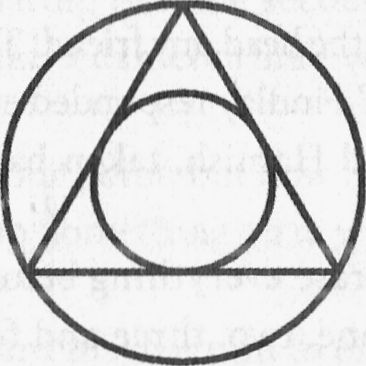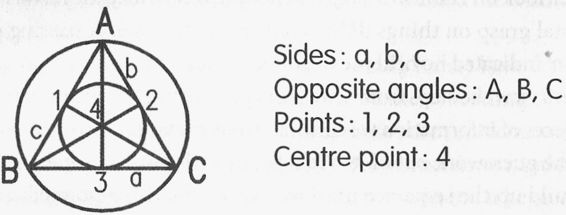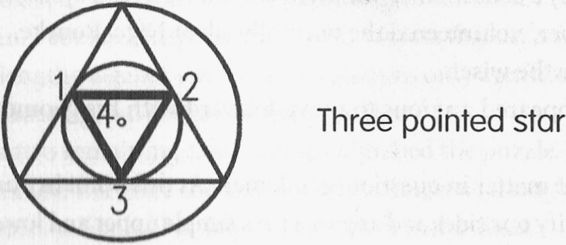Scorpio's Lot (79 page)
Authors: Ray Smithies
Tags: #Fiction, #Thrillers, #Drug Traffic, #made by MadMaxAU

‘Mr Findlay, would you please
give us some background on the Huesmann Historian Group and how you can help
us?’ I asked anxiously.
‘Karl Huesmann founded the
historian group around sixty years ago, with the intention of investigating
phenomena that had German affiliations. Pedley is no exception given its strong
Fatherland connections.’
‘I think this might be a waste of
time, Mr Findlay,’ I replied, raising myself from the chair. ‘We’re not here to
listen about various phenomena your group may be investigating. Our objective
is to seek factual information that will hopefully lead us to the underground
site.’
Gordon Findlay’s polite and calm
manners immediately gave way to a stern and blunt response. I had struck a raw
nerve. His raised voice seemed distinctly out of character.
‘Sit down, Mr Harrison! Please do
not take us for fools. We are not some dead-and-buried geriatric society that
idles its time away on mere gossip and imagination. Our research is extensive
and we take our work very seriously. This historian group operates on the
generosity of people who volunteer their time to resolve various issues in the
community. Your particular case is one of many on our books.’
I returned to my seat feeling
like a scolded child.
Findlay continued. ‘Now back to
the subterranean passageways. We can certainly help you, but first I have some
questions. How did you come to learn of the equilateral triangle?’
‘From a website at Perkins Press,’
Arthur volunteered.
‘Do you understand how an
equilateral triangle differs from other triangles?’
‘Yes - all three sides have equal
length.’
‘Do you have a reasonable grasp
of mathematics, specifically geometry?’
‘Yes, I’m a qualified engineer by
trade,’ offered Arthur.
‘Good, then you would understand
what a polygon is,’ Findlay said, testing his knowledge further.
‘Yes,’ Arthur responded
unconvincingly. I was sure that, like me, he didn’t know where all this was
heading.
‘Let me explain and listen to me
very carefully. This historian group has researched the subterranean site for
years and has gathered a wealth of information over time. From our accumulated
evidence we have finally pieced together the submerged three-pointed star -’
Interrupting Findlay’s
explanation, I said, ‘What? You’ve found it?’
‘Mr Harrison, you don’t find a
three-pointed star. It’s not some buried treasure you dig up. The star derives
from a mathematical formula incorporating an equilateral triangle.’
‘I don’t understand,’ I said, and
Hamish nodded in agreement.
‘Let me continue. There’s
considerably more to this triangle, and without the inclusion of a polygon the
answer would never have been revealed. Throughout the years we have gathered
and brought these vital clues together. Our search was completed around seven
months ago, enabling us to finally construct the star. Five crucial pieces of
information collected over the past decade have made it possible.’ Gordon
Findlay arose from his chair and walked across to a blackboard mounted on a
jarrah-timbered wall. Grabbing a piece of chalk, he recommenced his lecture.
‘I will demonstrate this
discovery in two parts. First I will list the information that has made this
possible and secondly I will construct the three-pointed star.’
We sat glued to our chairs.
Completing the first part, Findlay turned to his audience and paused for a
moment, allowing us the courtesy of digesting his notes.
Initial circle to be 3-inch
diameter
Introduce a regular polygon
Central star well
Map size 1:50-200 yards
Intrinsic triangle becomes your
star
‘This is all beyond my wee brain,’
confessed Hamish.
‘Yes, I have to agree, it’s all
very confusing.’ I reiterated the Irishman’s sentiments.
Nigel Bourke spoke for the first
time. ‘Initially it may look that way, but give us time and you’ll come to
understand their meanings.’
‘The best way to approach this is
to emphasise the problems we confronted prior to the five clues,’ Findlay said.
‘From a mathematical point of view we knew the three-pointed star was a
triangle, but it begged the question as to which type. We experimented with the
total spectrum from scalene and isosceles through to obtuse and acute. Our
first major breakthrough came in the form of a regular polygon. This meant that
all three internal angles were sixty degrees, which in geometry terms could
only mean one thing - an equilateral triangle whereby all three sides are of
equal length.
‘Our second such clue made
reference to a central star well that we interpreted as being the central point
within the triangle, which obviously held some relevance or importance. By a
stroke of good luck, one of our members uncovered a vital piece of information,
the use of a Pedley street map having a scale size of 1:50 to 200 yards. We
applied numerous formulas but to no avail, for we still lacked the key
ingredient to bring it all together.’
‘So what happened next?’
questioned Arthur, who by now was totally absorbed in Findlay’s story.
‘We share a common passion, Mr
Simpson,’ declared Findlay, reaching for the stick of chalk. For Arthur’s
benefit the historian commenced writing some formulas on the blackboard.
I looked at Hamish, who simply
shrugged his shoulders and wore a silly grin. I couldn’t help but agree with
him on this occasion. The sight of this lengthy algebra and inclusive analysis
only confused me more.
‘Fascinating, but do go on,’
urged Arthur.
‘The two remaining clues
literally clinched the puzzle. Our starting point became the three-inch circle
and our intrinsic triangle became our conclusion or finale,’ Findlay claimed
with enthusiasm.
‘What do you mean by intrinsic?’
I queried.
‘It means the inner or second
triangle.’
‘Oh,’ I responded, none the
wiser.
Sensing our ignorance, Findlay
decided on a second approach. The puzzled look on Hamish’s face was enough to
convince the historian that a mental grasp on things didn’t come easy for some.
A passing glance my way indicated he held me in similar contempt.
‘Let’s view the steps from a
layman’s perspective. By accumulating our five pieces of information we
eliminate interpretation. In other words we take the guesswork out of it. We’ll
begin with our first clue and gradually build up the sequence until we expose
the three-pointed star. We commence by drawing a three-inch diameter circle and
then place an equilateral triangle within its circumference, whereby the three
angles are touching the circle.’ Findlay illustrated his point on the
blackboard.
‘Why a three-inch circle?’ asked
Arthur.
‘A crucial measurement to
commence the geometry. Our next stage is to introduce a second circle within
the triangle, whereby the circumference is touching the triangle in three
places,’ said Findlay, drawing the additional prerequisite.

‘By the way, what is a polygon?’
I queried so as to grasp a better understanding.
‘It’s basically a collection of
line segments which form a cycle but don’t cross each other,’ volunteered the
normally silent Nigel Bourke.
I was none the wiser.
Findlay appeared anxious to move
forward with his geometry lesson.
‘Back to the matter in question,
gentlemen. At this point in our drawing we’ll identify our sides and angles
with a simple upper and lower case a, b, c arrangement. Our next step is to
draw three straight lines from each respective angle to its corresponding
opposite point where the circle touches the triangle. We’ll classify these
further points, including the centre point, as one, two, three and four.’

‘But why the need to go to such
lengths?’ I questioned, still oblivious to the drawing’s underlying purpose.
‘Because it relates to scale,
which I’ll explain shortly,’ declared Findlay.
‘We’ve got two circles so I hope
we get another bleedin’ triangle,’ Hamish said, adding some light humour to an
otherwise serious and thought-provoking affair. I was sure he didn’t expect to
receive such an eager reply.
‘You’ve hit the nail on the head,
my friend! That’s why you’re here and what I’m about to reveal,’ Findlay
responded enthusiastically.
‘You’re welcome,’ said Hamish,
taken back with the unexpected reaction.
‘I will now slightly erase
everything before you, leaving only the points represented by one, two, three
and four. Additionally, I will connect one, two and three in bold lines to form
a triangle or, more to the point, your submerged three-pointed star!’ said
Gordon Findlay triumphantly.

The three of us just simply
stared at the blackboard, not knowing whether there was just cause to
celebrate, laugh or cry. We were stunned by Findlay’s conclusion.
‘But... but... but what do we do
with it?’ I stuttered, totally dumbfounded with this mathematical outcome.